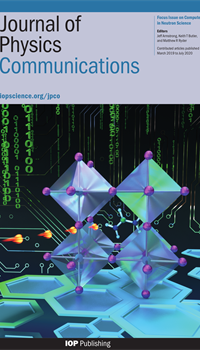 The journal is a celebration of research demonstrating how computers and neutrons together are used to understand systems as diverse as new plastic electronics, next generation solar cells and catalysts for complex hydrocarbon cracking.
The journal is a celebration of research demonstrating how computers and neutrons together are used to understand systems as diverse as new plastic electronics, next generation solar cells and catalysts for complex hydrocarbon cracking.
Editors Keith Butler (STFC Scientific Computing), Jeff Armstrong (STFC ISIS Neutron and Muon Source) and Matthew Ryder (Oak Ridge National Laboratory in the US), selected and compiled the articles for this special issue. They give a flavour of the vast array of experiments carried out at the ISIS and Oak Ridge facilities, the codes developed and the increased information that can be obtained from neutron experiments using high quality computer simulations.
“Neutron sources are expensive and powerful experimental resources. Computers are vital for realising the full potential of these facilities and extracting full value from the information gathered", said Keith.
“We can build models of materials atom-by-atom, and using modern computational techniques we can simulate exactly the same signals that are measured in a neutron experiment. By comparing the simulated signal to the experimental signal we can work out precisely how the atoms are arranged and moving in the real sample. Before we were able to do this, it was rather like trying to guess the positions and types of bricks in a house by looking at a photograph. Now we can build a model of the house, take a photograph and compare these photographs. Since we know the positions of the bricks in the model that we built we can then tell the positions of bricks in the house when the photographs match."
He added, “This is important because the atomic ordering and motions govern the properties of the material, such as how they conduct electricity, or how magnetic they are, or if they can be used to catalyse a chemical reaction. The combination of computers and neutron experiments allows a level of understanding of materials that was impossible beforehand, and this in turn allows scientists to design new materials for a huge range of applications."
The themed issue of the journal highlights how this is put into practice through a variety of open access research articles from “Understanding dynamic properties of materials using neutron spectroscopy and atomistic simulation" to “Neutron scattering study of the orientational disorder in potassium cyanide".
Said Jeff, “We acknowledge that for many scientists, performing their first neutron scattering experiment can already feel like a daunting step, without the additional step of learning how to use a new tool such as molecular modelling or Bayesian analysis. We felt it was therefore timely to produce a special issue which both showcases the variety of applications that computational methods can have across the entire suite of instruments at a facility, as well as provide some guidance in the form of a review of these methods for the total beginner."
The editors acknowledge the benefits of a concerted move towards high quality, open code; “It is immensely encouraging for the future of software in neutron science."
Read the Focus Issue on Computers in Neutron Science
More information about our colleagues:
ISIS Neutron and Muon Source
Oak Ridge National Laboratory
